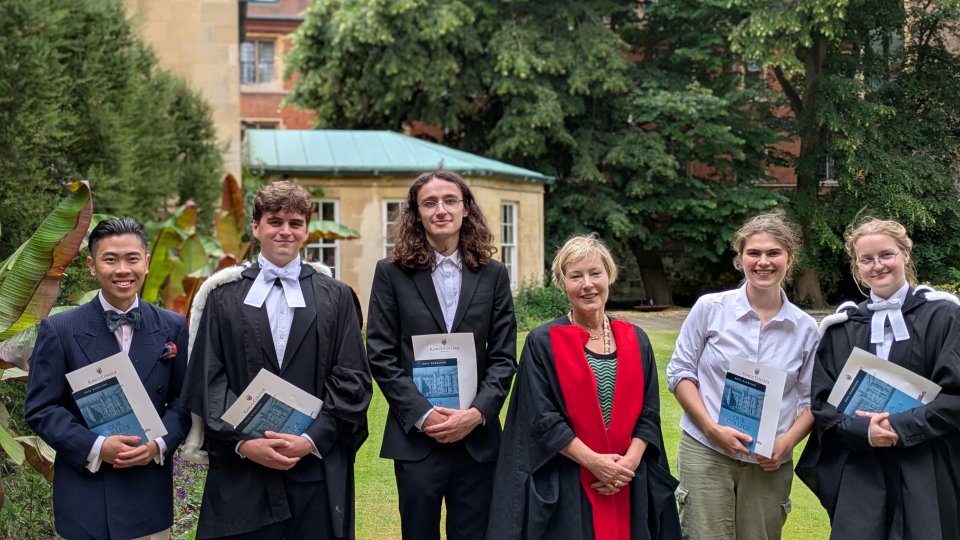The History of Art course covers a wide spectrum of art and architecture, from the medieval to modern and contemporary periods. The aim is to foster a wide and deep understanding of art and architecture, and to help you develop visual literacy and awareness, as well as a range of critical and analytical skills.
Course Structure
The History of Art course begins with a year (Part I) in which studies are focused on the materials of art, the interpretation of art, and understanding works of art accessible in Cambridge and in Cambridge collections. In the second two years (Part IIA and IIB) you take a paper on the history of the history of art, a paper on the display of art, four from a wide choice of special subject papers in which you study a period or theme in art history in great depth, and write a dissertation. It is possible to change to History of Art after taking Part I in another Tripos, and to take an adjusted form of Part II in one or two years.
History of Art at King's
King’s has long been prominent in History of Art. Former Fellows in the subject include such prominent art historians as Michael Jaffé, who was director of the Fitzwilliam Museum, Caroline Elam, long editor of the Burlington Magazine, and Nicholas Penny, the current Director of the National Gallery. What is more, King’s has a long tradition of its Fellows in English – notably John Barrell, Norman Bryson and Peter de Bolla – writing about the History of Art.
Because of John Maynard Keynes’s close connection with the Bloomsbury group, the College has a particularly fine collection of paintings by such artists as Roger Fry, Vanessa Bell and Duncan Grant, and much fascinating archive material relating to British art in the early twentieth century in the King's Archive Centre. The College also owns many other fine paintings, some on display in the Chapel, others on loan to the Fitzwilliam Museum. The college library has excellent holdings of books on the visual arts and also provides a very pleasant place to study.
King’s has a particularly large and thriving undergraduate and graduate community of art historians, making it a vibrant place for students committed to History of Art. Practical art is not taught as part of the curriculum, but the King’s Art Centre is a lively place. Life drawing and painting classes are held there, and there is a regular programme of exhibitions of work by students and others. A student picture loan collection, for the sole use of undergraduates and graduates, includes many works by contemporary artists.
King’s art historians are now teaching in universities across the world including Great Britain, Canada, France, Germany, New Zealand and the USA, and are working in museums, directing such major institutions as the Warburg Institute in London or the Peggy Guggenheim Collection in Venice. However, History of Art at King’s can be the entry to successful careers in a broad range of fields. In the past few years, these have included the art market, art and arts administration, international relations, journalism, and publishing. A significant number of graduates who studied painting conservation at the Hamilton Kerr Institute are now employed in major institutions.
Fellows at King's in History of Art:
Applying for History of Art at King's
We welcome applications from suitably qualified students at any kind of school, all over the world. The numbers admitted in History of Art vary from year to year, but we rarely admit fewer than two or more than five students each year.
Minimum offer level
A level: A*AA
IB: 41-42 points, with 776 at Higher Level
Subject requirements
While we don't ask for any specific subjects to apply to History of Art, and although Art & Design is accepted, we will normally require A*/7 in an essay-based subject or language.
We’d also recommend certain subjects for a strong application:
- History
- History of Art
- English (language or literature)
- Languages (ancient or modern)
Written Assessments
There are no written assessments for History of Art.
Written Work
No written work required for History of Art.
Interviews
Most (but not all) candidates are invited for interview in King's. Interviews in History of Art involve both general and specific questions about your motivations for study, analytical skills and intellectual potential.
Reading, Resources and Events
There is no required material that History of Art applicants must read but we hope that you will find the specific advice and reading suggestions below useful.
Events which may be of interest in the year before you apply (year 12 in the UK) include Oxford and Cambridge Student Conferences and King's Open Days. Students from backgrounds where there is little tradition of entry to Higher Education might like to think about applying for the Sutton Trust Summer Schools or the CUSU Shadowing Scheme.




